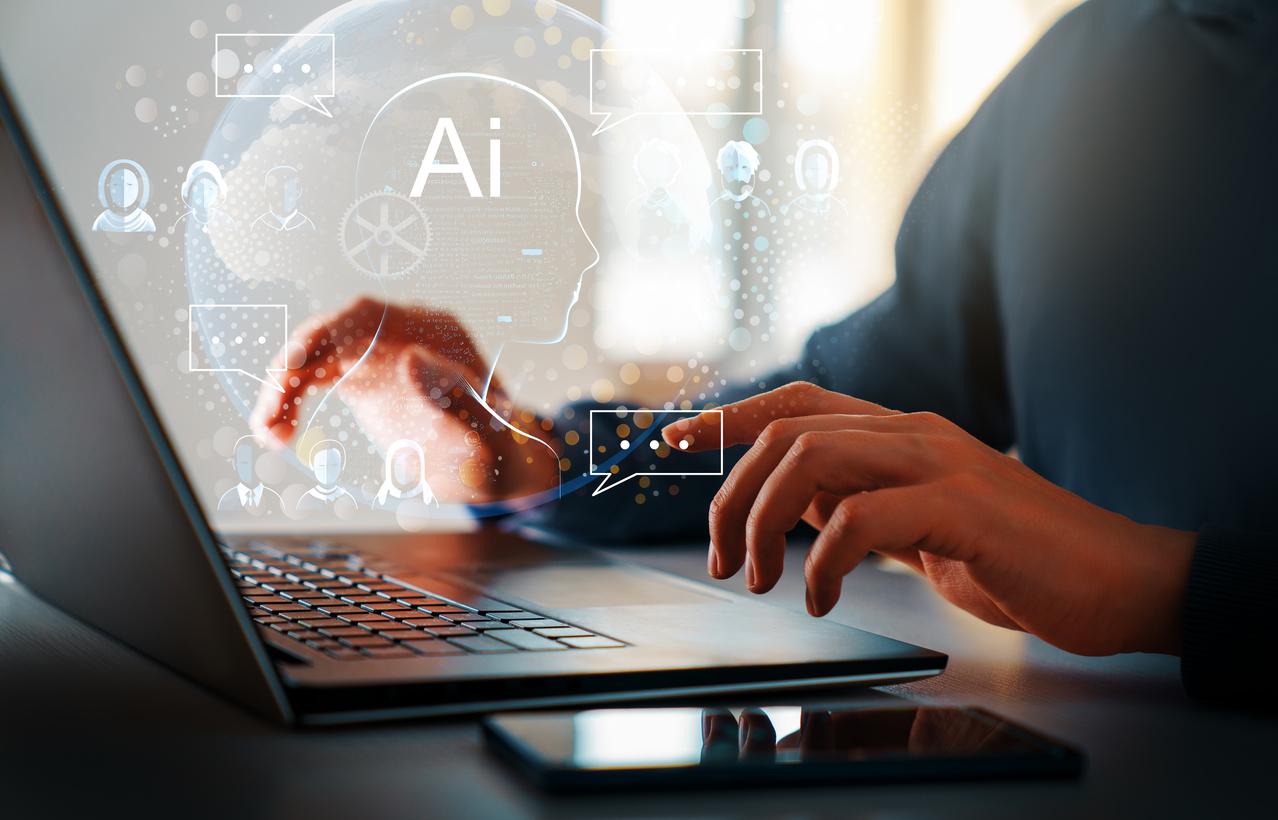Artificial intelligence (AI) is set to revolutionize cybersecurity by enhancing the ability to detect and respond to threats in real time. By analyzing behavioral patterns, AI can identify potential threats and prioritize risks quicker than traditional methods, enabling faster and more efficient responses to cyber threats. Additionally, AI-powered tools are playing a crucial role in data protection, providing advanced capabilities for monitoring, analyzing, and securing digital assets. To learn more about AI and its use in cybersecurity, keep reading.
How AI is Revolutionizing Cybersecurity
AI is transforming the way cybersecurity works, making it more effective and efficient. Here’s how it’s changing the game:
- Enhancing threat detection and response: AI can monitor networks and systems in real time, analyzing vast amounts of data to detect and respond to threats quickly and effectively.
- Analyzing behavioral patterns: By analyzing user and system behavior, AI can identify anomalies that may indicate a security threat, helping to stay one step ahead of cybercriminals.
- Prioritizing risks and detecting malware: AI algorithms can prioritize security risks based on their severity and detect malware by analyzing file characteristics and behavior patterns.
- Enabling security automation: AI can automate routine security tasks, such as threat detection and incident response, freeing up cybersecurity professionals to focus on other tasks.
AI Cybersecurity and Traditional Cybersecurity: The Differences
AI-powered cybersecurity offers a more proactive and adaptive approach compared to traditional methods. Here are some of the key differences between the two:
- Signature-based detection: Traditional cybersecurity relies on signature-based detection, which involves identifying known patterns of malicious activity. However, this approach is limited in its ability to detect new and evolving threats.
- Assisting human professionals: AI enhances traditional cybersecurity by assisting human professionals in detecting and responding to threats. AI algorithms can analyze vast amounts of data and provide insights that help cybersecurity professionals make informed decisions.
- Limitations of traditional cybersecurity: Traditional cybersecurity approaches often struggle to keep pace with the rapidly evolving threat landscape. They may lack the flexibility and adaptability needed to respond effectively to new and emerging threats.
- Addressing shortcomings: AI addresses the shortcomings of traditional cybersecurity by providing advanced threat detection capabilities. AI can detect and respond to threats in real time, helping to stay ahead of cyber threats.
How AI is Levelling the Playing Field
AI is set to play a pivotal role in modern cybersecurity, helping to level the playing field against cybercriminals. AI-powered systems can quickly adapt to new threats, identify patterns indicative of malicious activity, and respond proactively to mitigate risks. AI can analyze large amounts of data from various sources, such as network traffic logs, to identify potential threats and patterns that may indicate an attack. This capability allows AI to detect anomalies in user behavior or network traffic, which may indicate a cyber attack or system vulnerability. Additionally, by automating routine cybersecurity tasks, AI frees up security teams to focus on more complex threats, improving overall efficiency and response times in addressing cyber threats.
Overall, the integration of AI in cybersecurity is essential to stay ahead of cyber threats, ensuring a more secure digital environment for businesses and individuals alike.
Machine Learning and Deep Neural Networks
Machine learning (ML) and deep neural networks are changing how technology works. But what exactly are these technologies and how do they differ from AI? Read on for the explanation.
- Definition of machine learning: Machine learning is a subset of AI that enables systems to learn from data without being explicitly programmed. It focuses on developing algorithms that can learn and improve from experience.
- Difference between machine learning and AI: AI aims to create machines that can simulate human intelligence, while machine learning is a specific approach within AI that focuses on developing algorithms that can learn and make decisions based on data.
- Deep neural networks: Deep neural networks (DNNs) are a type of machine learning algorithm inspired by the structure of the brain. They consist of multiple layers of interconnected nodes that process information, enabling them to recognize patterns in data.
- Neural network algorithms: These are the mathematical models that power deep learning. They’re designed to recognize patterns in data and make decisions based on that data. Examples include convolutional neural networks (CNNs) for image recognition and recurrent neural networks (RNNs) for sequence data like text or speech.
Risks of AI in Cybersecurity
AI, while promising, is still in its early stages of development within cybersecurity. This means that there are potential risks and challenges that need to be addressed. One concern is the issue of false positives, especially when dealing with unknown or evolving threats. AI systems may incorrectly flag legitimate activities as malicious, leading to unnecessary alerts and potentially impacting system performance.
Another risk is the potential for hackers to leverage AI for malicious purposes. As AI technology becomes more accessible, there is a concern that cybercriminals may use AI-powered tools to launch more sophisticated and damaging attacks, highlighting the need for robust cybersecurity measures and ongoing research to stay ahead of evolving threats in the AI landscape.
Trend Micro: Using AI Since 2005
Although AI has only been making headlines fairly recently, Trend Micro has been using it to protect consumers since 2005 as part of its Web Threat Protection technology, which is featured in a number of its products. Web Threat Protection safeguards users from online dangers as they surf the web, employing AI to analyze threats and patterns, providing consumers with a safer online experience.
As always, we hope this article has been an interesting and/or useful read. If so, please do SHARE it with family and friends to help keep the online community secure and informed — and consider leaving a like or comment below.
